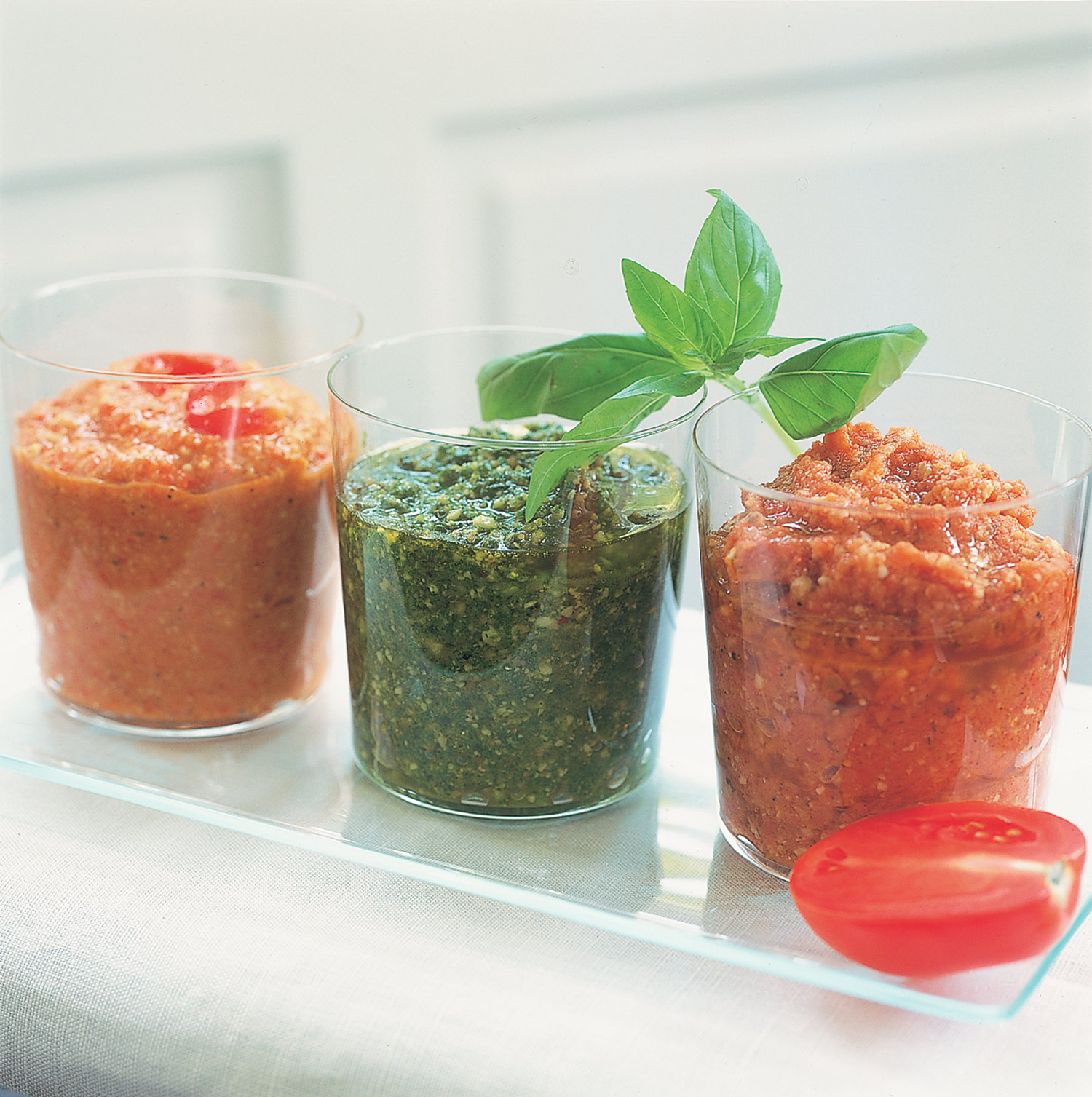
I make several versions of pesto (as is evident above)–this recipe is for the most noted form of pesto, made from fresh basil leaves.
Any time I’ve suggested a tool, a piece of equipment, or a culinary term that’s unfamiliar to you, you can go to Learn to Cook for more information.
Place the basil leaves in the bowl of a food processor fitted with the steel blade and, using the pulsing button, chop the leaves until reduced in volume. (Depending on the size of your work-bowl, you might need to add half the amount of leaves at first and, when reduced, add the remaining leaves.) Add the garlic, nuts, red pepper flakes (if using) and 2 cups of olive oil and a generous amount of black pepper. Process until the pesto is finely chopped but still retains some texture. If not planning to freeze the pesto, add the cheese and salt to taste. Process just to combine. (See the end of this recipe for instructions on freezing pesto.)
Remove as much pesto as needed and, before storing the rest in the refrigerator, pour a generous layer of olive oil over the top. Keep pesto refrigerated in a well-sealed sturdy container. Bring the mixture to room temperature, before each use.
Pesto can be stored in the refrigerator for several weeks if kept in a well-sealed container, completely covered with a layer of extra-virgin olive oil. To use, uncover and tilt the container to encourage the oil to run to one side. Scoop out the desired amount of pesto and bring it to room temperature. Cover the remaining pesto with more olive oil and return it to the refrigerator.
Combine all the ingredients, adding salt sparingly and omitting the cheese. If you’d like to use some now and freeze the rest, remove some pesto and add enough salt and cheese to suit your taste then place the rest in a container and cover it with a generous layer of olive oil. Add more salt and cheese after thawing. Pesto freezes beautifully for 3 months. Thaw overnight in the refrigerator, then bring it to room temperature before using.